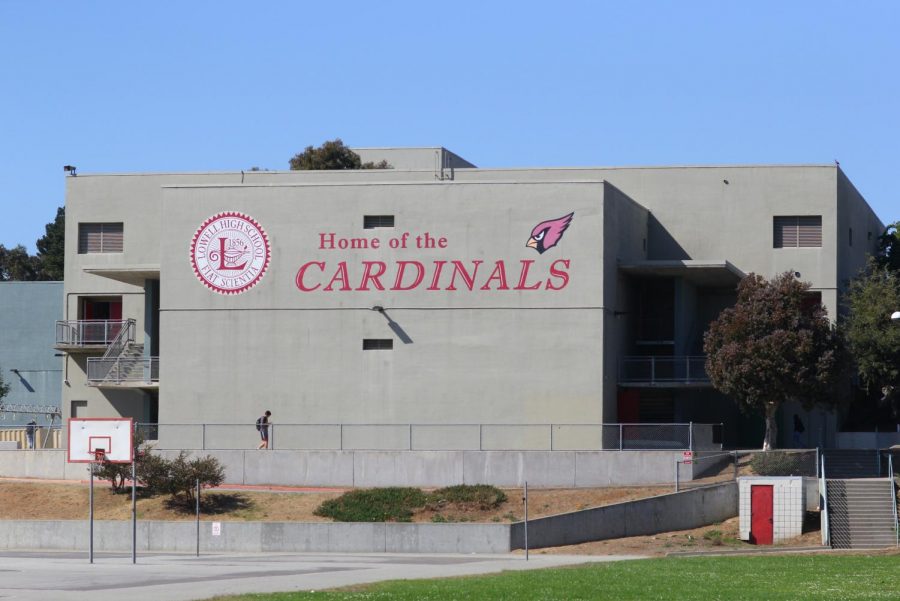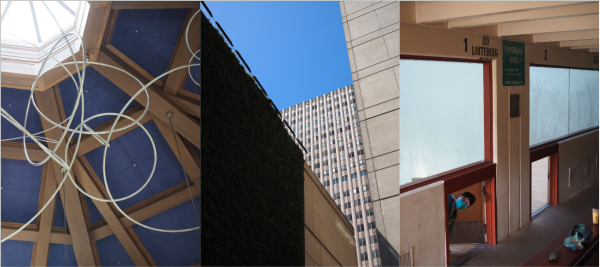How systemic racism affects Lowell admissions
Lowell’s admission process has been the center of controversy these past few years. In October 2018, SFUSD voted to give qualified students from Willie L. Brown Middle School (a predominantly African-American school) an automatic acceptance to Lowell. It was met with opposition from some Lowell alumni claiming that accepting these students would cause Lowell to lose its elite reputation. However, others saw it as giving these new students an opportunity which will benefit them in the long run. One side argues for the status quo and that grades should be the determining factor in admissions. However, the process should reflect more than just grades due to the existence of systemic racism.
Systemic racism is a form of racism expressed in the practice of social and political institutions. It’s reflected in disparities regarding factors such as wealth, income, criminal justice and education. In other words, it means the system is set up in a way where people of some races are treated better than others. Systemic racism is nothing new in America, and examples of it are alive and well all around us. For example, African Americans with college degrees are twice as likely to be unemployed compared to whites and African American students are three times more likely than white students to be suspended for the same infractions. It’s a real issue and hasn’t changed much over the years. While some progress has been made, such as the signing of the Fair Sentencing Act in 2010, which finally reduced the sentencing disparity between crack cocaine and normal cocaine from 100 to 1 to 18 to 1. Before this act was signed into law, “African Americans served virtually as much time in prison for nonviolent drug offenses as Whites did for violent offenses,” reads an ACLU analysis of the Fair Sentencing Act. Alas systemic racism is still very far from being eradicated and is still very prevalent.
It’s fairly obvious that systemic racism occurs within Lowell’s admission policies; all you have to do is look at the school’s demographics. There’s no doubt Lowell is the cream of the crop when it comes to San Francisco public schools. However, if you actually think every student in San Francisco has taken the same exact path to get here, you’re sadly mistaken. Every single student’s middle school experience, environment and economic background is different. Forty percent of Lowell’s population is economically disadvantaged. That may seem like a high percentage at first sight, but it is in fact the second lowest percentage of low income students compared to all other high schools in SFUSD (the first being SOTA), which means yes, Lowell’s admission process does in fact favor those who have the resources and money to afford tutors and study materials.
No, it does not take loads of money to pay attention in class, but to think that money is the only factor is preposterous. There seems to be a lack of understanding from both Lowell students and District officials that not all students have the privilege of a private school education or living in a nice neighborhood. Very few students have the privilege to only focus on school and nothing else. There are students who have to take a one hour bus ride to school everyday. There are students who’ve been working since middle school to help support their families. There are so many external forces that influence academic performance. Grades and test scores don’t show everything about a student, and the Lowell admission process needs to acknowledge that a lot more than it currently does.
The ultimate goal is to one day give all students an equal education. Affirmative action is a necessary policy to ensure that minorities get a chance at the same success their more privileged peers do.
There are students who have not achieved their full potential due to the environment they’re surrounded by. My experience at Everett Middle School wasn’t exactly an amazing one. There were textbooks that were being held together by a thread, there was a huge bullying problem and, at times, it was just an overall toxic environment. I don’t know about you, but to me, that doesn’t sounds like an ideal educational climate. There were some very smart kids at Everett who just completely gave up due to how much they had to go through every day at school. If you ask other students about their public middle school experiences I can tell you right now they will be very similar. I’ve never gone to a private school, but I will assume they have nice, new books. They don’t have to worry about safety and, usually, a lot of extra help is available, which isn’t true at most public middle schools. The gap just seems to be widening.
Affirmative action wasn’t created to make thing easier for minorities, it was created to make up for all the racism, discrimination and violence minorities were forced to go through in the past. If that causes a poor Latino student with a 3.5 GPA to beat out a rich white student with a 4.0, then so be it. That student with a 4.0 will more than likely shine at any high school they go to. That economically advantaged student also has the resources available to pay for a very good private high school. Now compare that to the other student who went to a low-performing middle school and hasn’t experienced an ideal educational environment throughout their life. They don’t have the resources to pay for a good high school, so for them it’s Lowell or bust when it comes to going to a top 100 school in the nation. The ultimate goal is to one day give all students an equal education. Affirmative action is a necessary policy to ensure that minorities get a chance at the same success their more privileged peers do.
I’m not calling for a random lottery system at Lowell, but the fact that 70 percent of students are accepted purely off grades and test scores is unfair. A student who had to go through a lot of rough patches while in middle school and was still able to acquire a 3.5 or above GPA should be given priority compared to someone who is financially well off, has a family history of success and was able to get a 4.0. Giving these students a chance is what affirmative action is about. It’s not handing them admission on a silver platter. It’s more like, “Hey we’ve seen what you’ve been through and we see your commitment to an education, here’s a chance to further prove yourself.” I guarantee that those students who get a chance won’t take it for granted and that it will result in a lot more success among minority communities.
Lastly, changing Lowell’s admission policy won’t eradicate racism, but it will give a lot of hope to minority parents when they see their child who’s grown up in toxic environments be accepted to such a prestigious school. I know a lot of us at Lowell have parents who are immigrants and I know we remember the joy on their faces once they saw our acceptance letters. This isn’t about undermining student’s achievements in middle school, it’s about realizing that a system that mostly relies on grades is a flawed one and allows those at the top to stay at the top and forces those at the bottom to stay at the bottom. Everyone deserves a chance at an equal education. Those with 4.0 GPAs will succeed anywhere you send them. They won’t miraculously lose their smarts if they go to a high school other than Lowell. Accepting more underprivileged kids into Lowell won’t result in anyone’s hard work being for nothing. It will result in giving kids a chance to escape the cycle of poverty through education.









Jesse Perez • Apr 28, 2019 at 10:20 pm
Sergio:
Recieved your article, How Systemic Racism Affects Lowell Admissions, from a mutual acquaintance. Please feel free to email me.
Jesse M. Perez, Treasurer
Seaside Monterey Peninsula LULAC Council 3280
[email protected]
831-277-9385